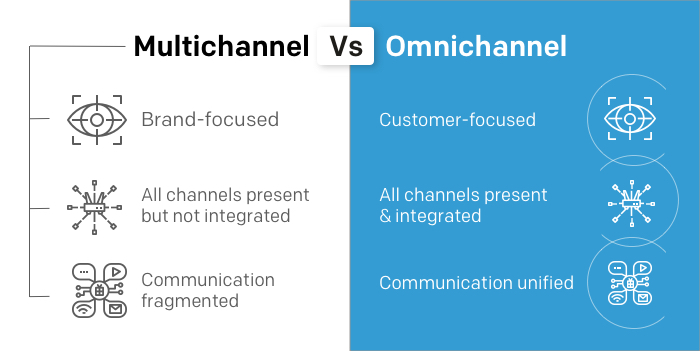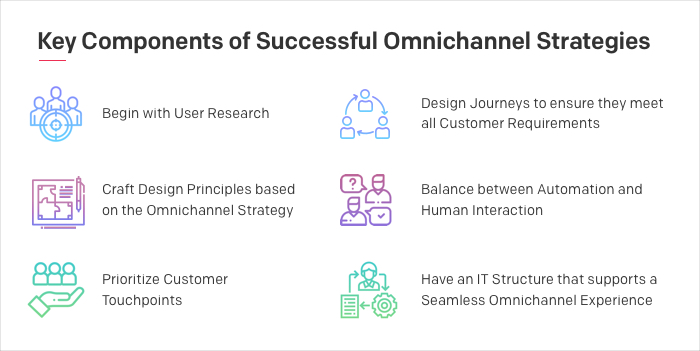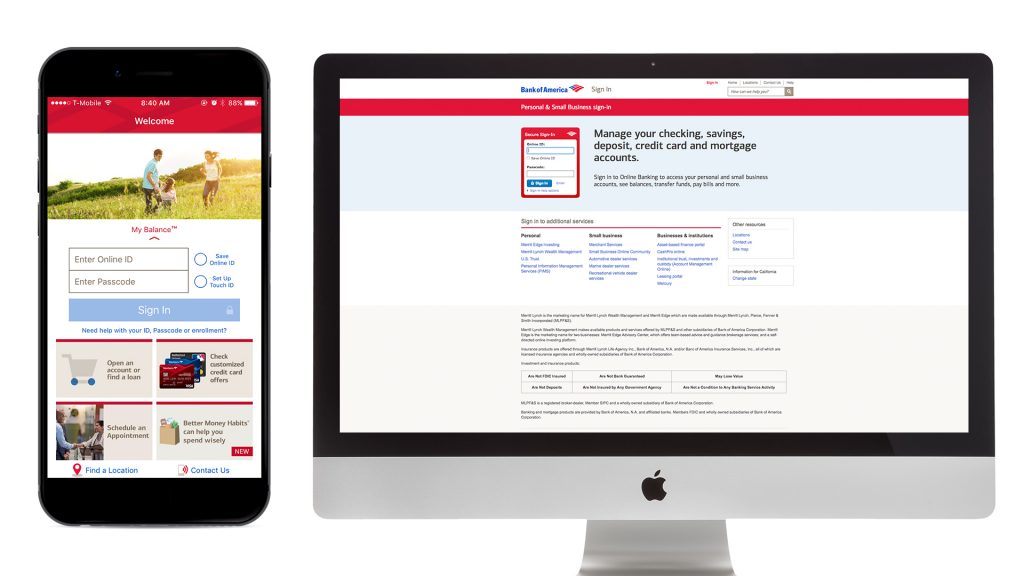Enterprises across consumer goods, B2C and B2B believe that customer experience can be an edge to attract and retain customers. While a digital medium is a key element of CX, customers decide when and on which channel they want to contact a brand, for what type of information, during which stage of the sales cycle and so on. Brands may be under pressure to be present across channels (which may not be required) and also orchestrate a positive and cohesive omnichannel experience.
Contents
What is Omnichannel Customer Experience?
At its core, the omnichannel promise is simple; it means supporting customers effectively and cohesively across all digital channels, and all the different ways in which customers and organizations can interact with each other. The overarching goal is to ensure that the product or service being offered makes the best use of the channel and helps in fostering a consistent, positive customer experience.
Omnichannel CX can thereby be summed as the cumulative effect of the strategically planned user experiences that extend across all channels, devices, and incorporates the brand’s tonality across all designs and messaging seamlessly and consistently.
Omnichannel CX success, however, is not merely limited to the number of channels integrated as part of the customer communication cycle. There’s a lot more to an Omnichannel CX strategy.
The CX vision of your brand is exclusive to the experiences you wish you create. It is about the larger purpose you wish to accomplish and the feeling you would like to invoke in your customers. Brands should thereby formulate their exclusive omnichannel definition to create a strategy for managing omnichannel experiences efficiently.
Why do brands struggle with Omnichannel CX Transformation?
One of the most common reasons brands struggle in this area is because they are channel-aligned rather than customer-aligned. Also given the surge in customer touchpoints, enterprises are overwhelmed and tempted to be present across platforms in the hope to garner a competitive advantage. The key, however, is to identify what works, carefully plan and execute a strategy that resonates with your brand and customer vision.
Brands with omnichannel customer engagement strategies retain over 89% of their customers on an average. Tapping into the right combination of omnichannel and customer experience trends will be the key to success for enterprises, business leaders, marketers and CX professionals in 2020.
Is Multichannel and Omnichannel experience the same thing?

In multichannel communications, the ‘brand’ remains the focus through which businesses engage consumers by sharing relevant content across multiple touch-points. Most brands often apply multi-channel marketing methods as it seems quick and easy to implement. As the nature of multichannel communications is fragmented, the messaging is not necessarily seamless or consistent across channels. This approach does not focus on creating a unified voice by optimizing the customer experience across channels.
On the contrary, omnichannel experience focuses on creating a unified customer experience from the first to the last point of contact, gathering customer insights and data along the journey to provide relevant and integrated messaging throughout – the ‘customer’ being the point of focus.
Brands embarking on an omnichannel transformation must thereby ensure that all channels are optimized for each customer interaction. And to be able to achieve this, they must seek to understand what customers truly care about at a granular level.
So what do customers truly care about?
- Speed and flexibility
- Reliability and transparency
- Simplicity and clarity
- Proactive outreach and timely communication
- Empathy and care
That said, not all customer expectations can be categorized into specific segments. Brands should explore ways to gather direct feedback and insights from customers to understand what matters most to them and why. Additionally, not all these factors can impact the overall experience. It could be a combination of these at varying degrees and more that can contribute to the overall experience. It’s thereby critical to analyze the factors that can make all the difference. While speed might be the top priority for one brand, timely customer communication might be the key to another.
Let’s explore the essential components for brands to consider while crafting an exclusive omnichannel experience.

Begin with User Research
User research is the foundation for creating a successful product or service. It lays the user at the center of the experience and helps in crafting offerings that align with the user’s needs. It’s essential to align your omnichannel strategy with a scientific technique like user research to gauge and assess what users say vs what they do, which could often be remarkably different. The insights with user research can be integral in creating a befitting omnichannel strategy and help in understanding the key triggers that influence a positive customer experience across channels.
Craft Design Principles based on the Omnichannel Strategy
Considering the surge in digital platforms and technologies, the way ahead for brands to differentiate and garner a competitive advantage is to create offerings embedded in an intuitive design interface that is custom built to match the customer persona. Design principles that align with the omnichannel strategy can help in influencing the customer communication process with insights about the most receptive channels that can increase engagement and elevate the customer experience to a whole new level.
Prioritize Customer Touchpoints
Not all touchpoints are significant for every business. Even within a brand, the touchpoint that works for one service might not be apt for another. Prioritize customer touchpoints in the context of the business and focus on the ones that can have the most significant impact on the overall customer experience.
Design Customer Journeys to ensure they meet all Customer Requirements
Cluster customer segments by determining where their buyer journey begins and identifying all the touchpoints they prefer & the triggers that lead to desired outcomes. By identifying what leads to cart abandonment, retail brands can modify the customer journey and enhance the shopping experience across channels. By mapping customer journeys and beginning with the end objective in mind can help brands in setting goals, prioritizing the most important journey; analyzing the complexity involved in enhancing the journey and what this means to the customer.
Balance between Automation and Human Interaction
While customers expect brands to understand their preferences with intelligent technology they also expect empathetic human interactions depending on where they are in the journey. Maintaining a fine balance of both into the overall customer experience can be the real differentiator for brands. By understanding when a conversation needs to switch from a bot to an agent especially when a customer has a specific or unique request can bring in a remarkable difference to the customer experience.
Have an IT Structure that supports a Seamless Omnichannel Experience
Seamless user experiences are close to impossible without the right technology in place. The changing consumer preferences, the convergence of technology and the dynamic business environment are opening doors for new opportunities.
To succeed and capitalize on these opportunities, enterprises will have to adopt an agile, design-led, customer-first development process that views the IT & design structure as an ongoing process with openness towards continual redesign that evolves alongside the customer journeys. With new technologies and applications on an all-time rise; brands will be more open about experimenting and implementing an IT backbone for their omnichannel experience.
Brands that have Scaled with Omnichannel Customer Experiences
Amazon
To be able to begin where you last left, regardless of the channel being used is one of the factors that make omnichannel experiences most desirable to customers and brands. True to its mission, the ‘digital-only’ company nailed its data unification process through its customer accounts, a space where they’ve been gaining a competitive edge with relevant promotions, personalized recommendations; enabling users to review, screen and order effortlessly. Its omnichannel strategy allows shoppers to switch between the app and website without losing track of any of their activities. Additionally, the prime account enables access to the e-commerce platform, video content and also enables integration with Alexa and Kindle. This gets a boost further where customers with Prime Subscriptions can use the same account across different countries. It also manages third-party vendors who can communicate via Amazon’s channels and enable a seamless experience with the same speed and efficiency. Amazon is truly one of those rare brands that are infinite with its reach, making it one of the brands that master the omnichannel strategy remarkably.
 Image source
Image source
Bank of America
With the need for personalization & seamless experiences at an all-time high, Fintech terms are no exception. Banking service providers must thereby leverage data and insights collected throughout their customer journeys and use these insights to build customer value & trust, improve satisfaction and reduce operational costs. Whether an in-person or online transaction or an ATM visit, banks need to ensure a seamless omnichannel experience to their customers. Bank of America, one of the biggest brands in the industry, takes its omnichannel development seriously. They are raising the bar for creating dynamic experiences that allow cheque deposits, appointment scheduling and paying monthly bills from desktop and mobile apps to ensuring it creates a hassle-free experience for users. The virtual bank visits enable customers to access Free Wi-Fi and continue bank transactions during their wait period and also offer tablets at their kiosks. Taking the omnichannel experience one notch higher they formulated the ‘Robo-branch’ initiative where customers can manage conversations and grievances online without having to wait for a teller, perfectly blending digital with personalized financial planning.

Image source
Disney
Another brand that has an impeccable omnichannel strategy is Disney. It has every detail carefully planned and seamlessly executed. The My Disney Experience tool is available for both desktop and mobile devices and enables guests to plan their entire vacation. From purchasing Fast passes, park tickets, viewing showtimes, making dining reservations, checking transportation and also purchasing merchandise, all of this can be managed from within the tool. Besides, Disney’s Magic wristbands connect guests with predetermined My Disney Experience choices that help guests enter parks, unlock hotel room doors, get photos, check-in at Fast Pass entrances for rides, make payments via the credit cards stored in their accounts and also get deliveries of their purchases made right to their rooms. Disney’s CX experience is second to none for how it magically integrates it’s online and in-person customer experiences.
IKEA
IKEA the global home furnishings retailer is making the most with its omnichannel experiences. The brand has one of the most intuitive mobile app interfaces that operate like an eCommerce website, enabling customers to choose and save their favorite catalog items to be used on the website or in-store. Additionally, it also uses VR technology to help viewers visualize furniture in their homes without having to visit a store. The stores are equally well planned with the app informing users precisely where they can pick up goods from the store. Not just this, they also share current inventory and stock availability information based on the forecasted shipment inventory and current stock levels to ensure customers can plan their visits based on the stock availability. Ikea also has ‘pick-up and order’ points which enable customers to pick up orders closer to where they live.
One of the most recent additions to its omnichannel experience is its new batch of IKEA Planning Studio stores which uses 3D planning tools for kitchens and bathrooms. These are relatively smaller stores aimed for customers who cannot visit out-of-town stores. They hold no stock, inspiring customers to pre-book orders that are thereby delivered and installed from their larger warehouses. Ikea is one of the brands that have seamlessly integrated its online and offline shopping experiences to create a truly exceptional omnichannel strategy.
The need for omnichannel is not limited to specific industries; it’s influenced by customer preferences as more channels continue to emerge. With mobile and assistive technologies becoming ubiquitous to the customer experience, brands need to look at ways to embracing these to stay top of mind and provide users with relevant omnichannel engagement. And the ones that understand this & commit themselves towards understanding customer journeys to build capabilities that provide a seamless omnichannel service will be able to scale customer experience & delight in the years to come.





